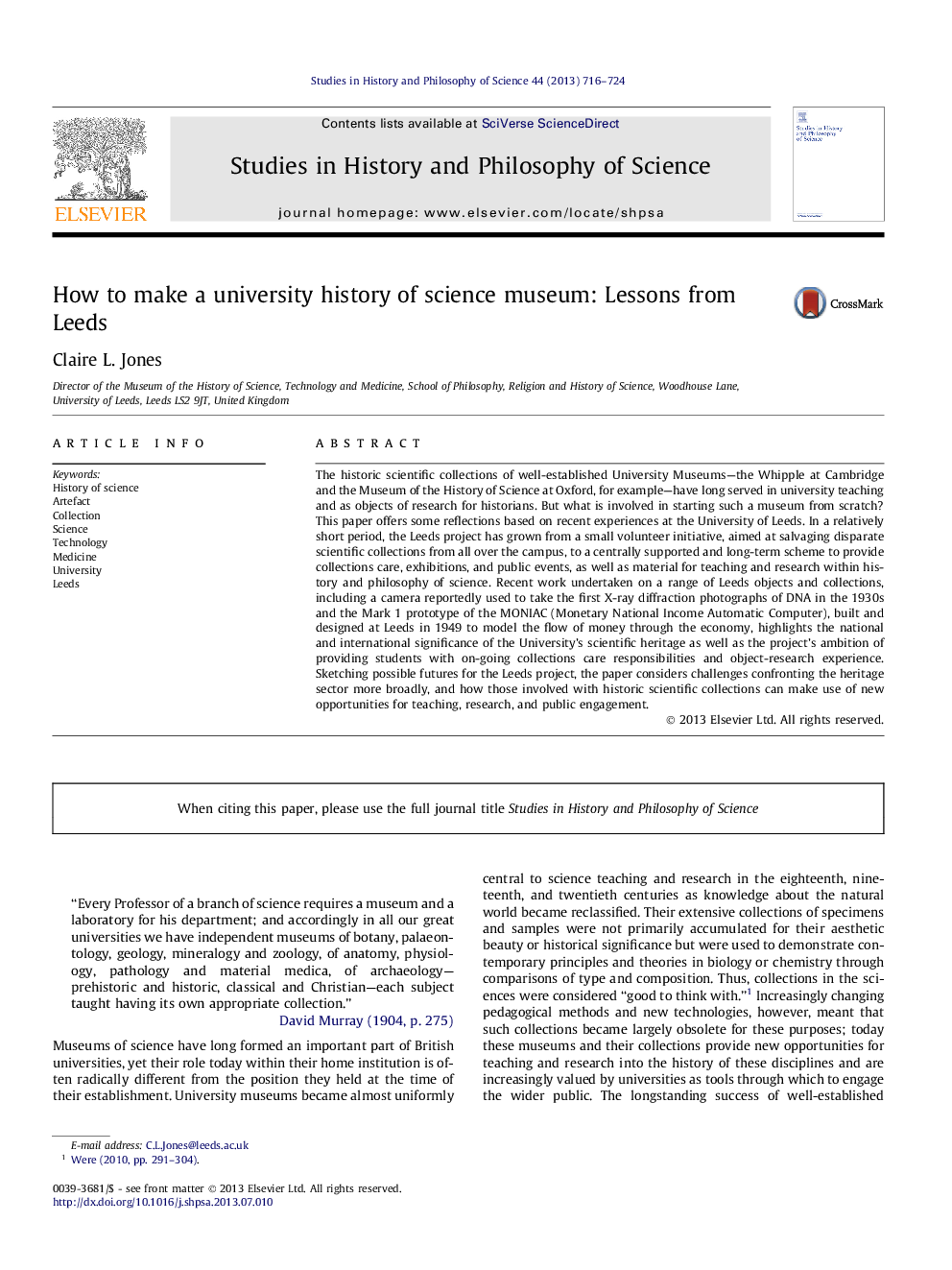| Article ID | Journal | Published Year | Pages | File Type |
|---|---|---|---|---|
| 1160676 | Studies in History and Philosophy of Science Part A | 2013 | 9 Pages |
•The University of Leeds has an important scientific heritage dating back to 1767.•The University’s Museum taskforce seeks to salvage deteriorating collections.•The Barr & Stroud rangefinder, the Newlyn-Philips machine and the Laennec stethoscope are among the most significant artefacts.•Leeds’ collections provide unique opportunities for object-centred learning, research and public engagement.•People are a university museum’s most valuable resource.
The historic scientific collections of well-established University Museums—the Whipple at Cambridge and the Museum of the History of Science at Oxford, for example—have long served in university teaching and as objects of research for historians. But what is involved in starting such a museum from scratch? This paper offers some reflections based on recent experiences at the University of Leeds. In a relatively short period, the Leeds project has grown from a small volunteer initiative, aimed at salvaging disparate scientific collections from all over the campus, to a centrally supported and long-term scheme to provide collections care, exhibitions, and public events, as well as material for teaching and research within history and philosophy of science. Recent work undertaken on a range of Leeds objects and collections, including a camera reportedly used to take the first X-ray diffraction photographs of DNA in the 1930s and the Mark 1 prototype of the MONIAC (Monetary National Income Automatic Computer), built and designed at Leeds in 1949 to model the flow of money through the economy, highlights the national and international significance of the University’s scientific heritage as well as the project’s ambition of providing students with on-going collections care responsibilities and object-research experience. Sketching possible futures for the Leeds project, the paper considers challenges confronting the heritage sector more broadly, and how those involved with historic scientific collections can make use of new opportunities for teaching, research, and public engagement.
